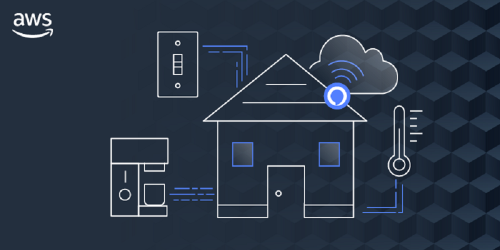We recently sat down (virtually) with James Mylett, Vice President, U.S. Digital Buildings, Schneider Electric to learn more about what can connected devices and IoT technology do to help organizations run better.
Here’s how that conversation went:
1. What can connected devices and IoT Integration do to help organizations run better?
IoT technologies enable organizations to run better by allowing building owners and managers to employ predictive strategies which optimize the user environment, while creating more productive, efficient, smarter and healthier buildings.
Considering the impact of the novel coronavirus on state of the workplace, building managers who embraced IoT technologies can now adjust HVAC systems, lighting and other controls remotely without even entering the office. Taking this a step further, building managers can also rely on the technology to autonomously make real-time decisions to improve the building health.
And, as we find ourselves transitioning back to the office, more workplaces will take advantage of the hot desking or the hoteling model, where employees forego an assigned workspace and instead choose an open desk to work from when they’re in the office.
This same IoT technology will also help offices control capacity protocols as we begin to slowly return. With modern BAS and IoT-enabled applications, an employee can enter a building and use a mobile app to reserve a workspace for the day. The employee can use that same app to adjust light levels and temperature set points or book a meeting room.
These are just a few examples of the many ways IoT technology can play a role in the workplace. The ability to have this type of control and interaction is also becoming more important as Gen Zers join the workforce. Overall, smarter buildings with IoT-enabled spaces support workforce engagement strategies which therefore leads to more efficient and effective organizations.
2. How can integrators better understand how to implement connected and IoT devices into overall technology systems?
Smart buildings will be the platform for technological innovation in applications, analytics and services for building occupants and facility managers. Integrators play a critical role in applying these innovations which today are either sparsely deployed or still unimagined.
These launching pads for new ideas will not only facilitate methods for better ways to optimize our building environments, helping building managers control buildings remotely during COVID-19, but also enhance our longer-term productivity.
The key is, and will be, bringing together the data from controllers, meters and panels throughout all facets of facility operation to create an integrated network of connected devices.
With analytics, this data is then used to inform operators and occupants alike with guidance to optimize traditional outcomes like energy efficiency, but also enable more progressive and occupant-centric measures such as experience, comfort, engagement and productivity.
3. How will connected devices and the Internet of Things continue to grow in the next decade?
COVID-19 is accelerating the already fast-growth IoT industry and this growth will be transformative for organizations in this decade and into the next. We have already seen the impact of tools such as remote connectivity, building analytics, machine learning and occupancy sensing, among others. However, in the grand scheme of things, we have only unlocked a fraction of these tools’ potential and as time goes on, we will innovate new ways to leverage these tools, create new tools, and continue to leverage IoT Integration toward measurable outcomes.
For example, energy efficiency will take the form of integrated systems designed as solutions to optimize energy efficiency and management. These integrated systems are more efficient as well as faster to build, install and commission. Most importantly, they become autonomous, self-diagnosing, self-healing and predictive.
The ability to proactively manage this energy infrastructure will be essential and is dependent on data analytic technologies such as AI and ML so the industry can turn that data into actionable intelligence for energy management.
Our goal is to use these emerging technologies to make hours spent in the workplace significantly better, healthier and more productive while doing measurable good for the planet.
4. How should users manage the security risks that might appear due to an influx of connected and IoT devices?
As the IoT Integration becomes more prevalent, so does the question of potential security risks. For industrial organizations undergoing digital transformation today, security risk goes well beyond a sole connected object or database.
The whole extended digital enterprise becomes implicated, including the supply chain and partner ecosystem.
Related: Future Workplaces Rely on AI, IoT and Other Data Collection to Make Experience Better
Good security measures require a holistic strategy including people, processes, and technologies that integrate security at every level. Organization-wide changes, processes and employee training must inform and bolster any company’s cybersecurity stance for mitigating digital risk.
Cybersecurity strategy must be an ongoing business conversation for every company engaged in digital transformation. If you think of cybersecurity as spanning all facets of your organization, you can take a proactive approach and drive digital innovation as an intrinsic part of your security framework.










